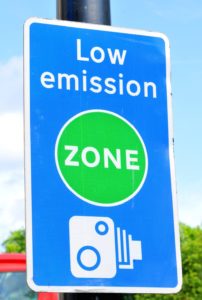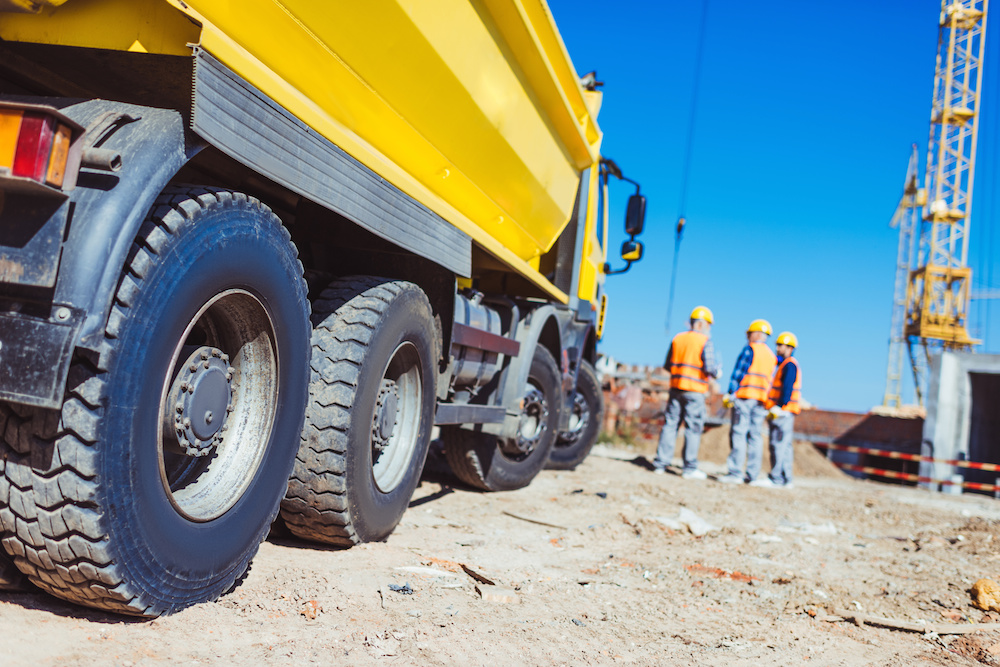 Will Clean Air Zones be a breath of fresh air? Construction Plant News investigates.
Will Clean Air Zones be a breath of fresh air? Construction Plant News investigates.
Air pollution has become one of the great issues of our times – and with good reason. It is estimated that over 9,000 people die prematurely in London alone as a result of an air quality crisis that has seen nitrogen oxide levels in parts of our capital that only China or India could rival. As a result, the government has revealed plans to introduce five Clean Air Zones – in Birmingham, Derby, Leeds, Nottingham and Southampton – with the capital’s own ultra-low emission zone already coming into force in April 2019. Not only that but a further 23 local authorities will be expected to conduct feasibility studies on their own schemes.
So what does that mean for the contractors and plant hirers who will be required to transport machinery, men and materials into our towns and cities in the years ahead? Although the plans for each authority are at different stages of development, it is most likely that, in order to levy a charge, these schemes will be based on Automatic Number Plate Recognition (ANPR).
Southampton is already proposing a fee to be levied on buses, taxis and trucks over an area that extends nearly as far as Portsmouth, for instance, whilst Birmingham is planning to exact a fee from anyone – commercial or private – who is not driving a vehicle fitted with a Euro VI diesel or a Euro VI petrol engine. Moreover, as a result of the government’s Clean Air Zone Framework, local authorities have the power to set the charge at a level they deem appropriate.
“With each authority doing its own thing what we are seeing at the moment is no formal plan for how schemes will operate,” explains Colin Snape of the Road Haulage Association. “If you are going to drive into a Clean Air Zone with a vehicle that’s not complaint will you need to register it? What will happen if your depot is physically based within a zone? And what happens if one vehicle drives into two or more different zones in the course of a single shift? Will this result in multiple charges?”

Because the schemes are designed to target older, more polluting vehicles, Euro VI powered units will be exempt, but simply upgrading to cleaner powertrains could be impractical for most fleet operators in that timeframe. Continues Colin: “Smaller operators of just 1 – 5 vehicles tend to renew their fleets through second hand units, but this is a market that has been completely distorted by the insistence on Euro VI as the only viable future option, completely devaluing Euro III, IV and V values, for instance, whilst significantly increasing the cost of investing in Euro VI technology. That’s a situation which is now exacerbated by the fact that the older vehicles they own are now worthless because residual values have collapsed.”
Similarly, larger operators simply won’t be able to renew entire fleets to cleaner options, through lack of available capital and issues of supply and demand. So, if renewing the fleet is not feasible, what other options exist? Moving vehicles to areas, either in the UK or abroad, where CAZ charges are currently not in force simply shifts the pollution problem elsewhere, and retrofitting HGVs in order to raise them to Euro VI compliance levels is not a solution either because the technology remains prohibitively expensive.
“Whilst the Road Haulage Association wants cleaner air more than anyone, hauliers will not be able to afford a charge of up to a £100 every time a truck enters a Clean Air Zone,” concludes Colin, “and it would be simply disastrous for many operators. Congestion is the biggest issue and clean air zones levied at commercial operators will not solve that problem, because they are unlikely to remove enough vehicles from our roads to make a difference.” Indeed, by identifying congestion hot spots, and re-routing traffic in inner cities, or utilising technology to improve the flow of vehicles, it is argued that the most polluted areas could see much cleaner air.
So what else could be done to ameliorate the impact on already hard pressed firms in the logistics and construction sectors? One option could be to vary the levels of the charges, with a sliding scale of the largest for Euro III powered vehicles to a much lower charge for Euro V, thereby giving operators a longer period to switch to the cleanest Euro VI engines without accruing prohibitive additional costs, but there also needs to be a plan in place that goes beyond clean air zones.
In terms of the engine technology itself, there is presently no prospect of a Euro VII emissions standard, which means that Euro VI is going to be as good as it gets for a drivetrain that has hitherto powered the modern world. As a result any further improvements will need to be made by moving away from Diesel completely. So what lies ahead for the industry?
Euro VI is not a tool for tackling climate change and in this context it is important to separate the two parts of the pollution problem – local air quality caused by particulate matter and Nitrogen Oxide emissions and the wider, global issue of climate change from greenhouse gases. Given that the burning of hydrocarbons inevitably produces CO2 the latter is a problem that is likely to remain with us for the foreseeable, especially given that the EU’s own forecasts suggest that 86 per cent of the transport sector will still be reliant on the Diesel as far forward as 2050. In addition, particulate matter may have been reduced from the tailpipe, but braking and tyre wear will continue to affect air quality.
So why isn’t there a switch to alternatives like electric today? Clearly issues with charging times and infrastructure remain, whilst questions around residual values is holding back the take up. Moreover, the emergence of a 44 tonne truck is more likely to be in the 2040s than the ‘20s, and presently there are only two per cent of vehicles operating on anything other than Diesel. Similarly, in order to maintain acceptable residual values, a fleet operator needs to be confident that whatever fuel solution they choose will still be with us in ten years’ time.
The reality is that we have a finite amount of road space at our disposal and we all need to face difficult questions about what represents the efficient use of it. Do we need to discriminate against certain types of vehicle or journey? And is it sensible to target the largest vehicles when consolidation of loads should be the future of the future of the logistics industry?
For further information on the London LEZ visit tfl.gov.uk/modes/driving/low-emission-zone









